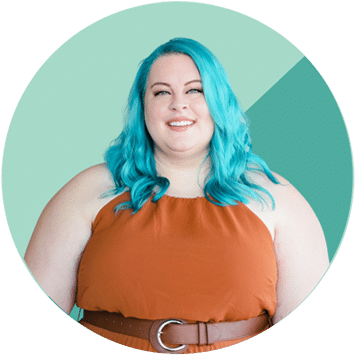emotional wellbeing
Written By: DiveThru Team
Reviewed By: Hannah Fuhlendorf M.A, LPC

Do you get the “winter blues”? Even if you like wearing oversized sweaters, drinking PSLs, and stepping on crunchy leaves, pining for warm summer months is totally normal. Getting bundled up and giving off ASAP Rocky/Rihanna Met Gala vibes makes our hearts happy, but when the cold air makes our lungs hurt? Noooo thank you. We’re counting the days until July comes again.
But there’s a difference between being sad about shovelling snow and seasonal depression. When the winter blues start to interfere with your daily life by making everyday tasks harder than they’d usually be, you may be experiencing seasonal depression. If you’re wondering if you have the winter blues or are dealing with something more, let’s DiveThru it.
Seasonal depression, aka Seasonal Affective Disorder, aka SAD, is a type of depression that’s experienced in the fall and winter and goes away when spring comes around. There’s also a rare form of SAD that occurs in the spring and summer months.
Unlike depression, which can affect anyone at any time of year, SAD is distinguished by a depressive episode being triggered by the change in the seasons for at least two years in a row (though not always consecutively). If the phrase “winter is coming” triggers the same level of dread in you as it triggered in Game of Thrones characters, maaayybe it’s time to consult a therapist.
Researchers theorize a few different causes for SAD. Reduced sunlight can lead to reduced serotonin levels — which affects our mood, happiness, sleep, and lots of other important functions. Basically, lower serotonin levels = lower mood regulation = potential depression symptoms.
There’s also a link to seasonal depression and melatonin levels. That’s the hormone that regulates your sleep patterns. The days are short and the dark lasts longer, so our body thinks it’s time to snooze, even though it’s only 7 p.m.. Rockin’ that retirement home sleep schedule and sleeping too much can take a toll on your wellbeing.
Bad news for the far north and far south: seasonal depression is found more often in people who live far away from the equator. This is thought to be related to the shortened days in the winter compared to places with a more consistent level of daylight. Okay, but do places near the equator have cozy fall nights with hot apple cider??… Yes?… Oh, well, never mind then.
It’s also more likely to affect people between 18 and 30 years old. (As if your 20s weren’t enough to deal with!) As you get older, if you haven’t experienced SAD before, the odds of you experiencing it goes down. And you may want to talk to your family, because seasonal depression is more likely to be present in those whose family members also deal with it.
Seasonal depression is more common in people with other disorders, such as bipolar II disorder, ADHD, major depressive disorder, and anxiety and panic disorders.
There are some symptoms associated with seasonal depression that you should look out for. Because it is a form of depression, there are the common symptoms of depression, which include:
A few of the fall/winter seasonal depression symptoms are:
If you find yourself sleeping a little too much, social distancing (for non-pandemic reasons), and enjoying way more of those pumpkin shaped sugar cookies than you usually do, you may be dealing with something more serious than the winter blues. Luckily, there’s a few options available to help you out.
One way to help seasonal depression is light therapy. That’s where you get a very bright light (way more than your run-of-the-mill bulb) and shine it at yourself for at least 30 minutes a day, usually first thing in the morning, to simulate daylight. Pretend it’s a solar eclipse and don’t look straight at it, of course. Actual sunlight is preferable, but sometimes that’s not an option, so a specialized light box is the next best thing.
Antidepressants are also an option for treatment. This 2006 study published in the American Journal of Psychiatry showed that light therapy and antidepressants both work for treatment, and it’s more up to patient choice and doctor recommendation. As well, this 2002 study in the Journal of Affective Disorders suggests that cognitive behavioural therapy to change your attitudes and behaviours around the winter months (mixed with light therapy) can have good long term results in patients, but the data is limited, so, you know, take it with a grain of salt and talk it out with your therapist.
But remember! The symptoms of SAD can overlap with the symptoms of other conditions, so always consult a doctor before trying out treatments yourself. So, yes, “treat yo’ self!” in the Parks and Rec kinda way: get that PSL you’ve been craving all week, but leave the SAD treatment advice to the experts.
Read More: 7 Helpful Ways to Take a Social Media Break, 5 Signs of Emotional Abuse & What to Do Next,